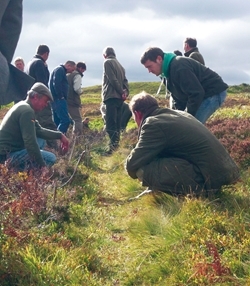 Q: Is the risk of injury dependent on the design of the snare, or on the way it is used?
Q: Is the risk of injury dependent on the design of the snare, or on the way it is used?
A: Both are critical. Snares that conform to the code of practice are designed to restrain rather than kill, and in most instances will release non-target animals that encounter them. Foxes and any non-targets that are held in such snares will generally be uninjured and fit for release, provided also that the snare has been used as prescribed in the code of practice.
Q: Why do we also need to focus on operator skills?
A: Few – if any – methods of catching wild animals are independent of operator skills. Fieldcraft is needed to decide when it is appropriate and safe to set a snare. In particular, setting snares where a captured animal could entangle the cable with nearby obstacles hugely increases the risk of it being injured – for foxes, the risk of injury or death is ordinarily <1%, but rises to 16-40% where entanglement occurs. The necessary skills, and awareness of the mistakes to avoid, can be taught.
Q: How can we ensure high standards of operation?
A: In the last 25 years the GWCT has worked constructively to understand existing fox control practices, to improve snare hardware, and to identify good and bad operating practices. Through publications, the codes of practice, and training courses we promote a responsible and careful attitude to the use of snares. Operating practices are critical to welfare outcomes, so following the code of practice is essential. All stakeholder groups representing the main users of snares are signatory to and promote the code of practice.